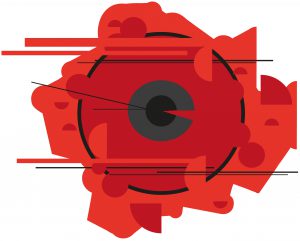In this graphic overview, we outline what stocks, legacies and archives these  collections house, how they came to Cologne, what approach the artists have chosen and how they are presenting the selected material in exhibitions. Artist Meets Archive MAKK RJM RBA KSM
collections house, how they came to Cologne, what approach the artists have chosen and how they are presenting the selected material in exhibitions. Artist Meets Archive MAKK RJM RBA KSM
Compiled by Inga Schneider (“Artist Meets Archive” project management) and supported by the curators of the participating establishments.
MAKK Museum für Angewandte Kunst Köln
• The Template Collection comprising some 25,000 sheets is part of the extensive Graphics Collection at the Museum of Applied Arts Cologne (MAKK).
• The establishment acquired the template collection along with the ornamental engraving collection in the course of the founding of the Arts and Crafts Museum (today MAKK) in 1888.
• Among other items, the collection comprises photographs, prints and drawings from the 15-19th century and, before the age of the Google image search, served as a kind of encyclopaedic image archive for graphic design and design templates. Illustrations of doors, chests, knights, animals or graphics from business cards and letterheads can be found in over 1000 portfolios.
• Dutch artist Erik Kessels creates a three-dimensional walk-through landscape of ruins out of 143 cards using a selection of 286 motifs from the template collection of the MAKK.
RJM Rautenstrauch-Joest-Museum RJM
• The Photographic Collection of the Rautenstrauch-Joest-Museum (RJM) comprises around 100,000 photographic items from the period from ca. 1860 to 1970 from virtually all regions of the earth. About half of these photographs originate in colonial contexts.
• The estate of Wilhelm Joest was passed on to the City of Cologne in 1899. Following the founding of the RJM (1901), the photographs formed the basis for the Photographic Collection.
• On his journeys to New Zealand, among other destinations, Wilhelm Joest purchased photographs from Elizabeth Pulman in Auckland (1867-1900).
• From these, Belgian artist Antje Van Wichelen selected the Maori portraits that she incorporates into her work “Noisy Images”.
• Van Wichelen transfers the photographic documents onto 16mm film and re-sorts them into groups. Artist Meets Archive
RBA Rheinisches Bildarchiv Köln RBA
• The stock of the Rheinisches Bildarchiv Köln (RBA) comprises approx. 5.4 million shots in the form of glass and film negatives, slides and original digital recordings.
• Finnish artist Ola Kolehmainen was particularly interested in the historical glass negatives, of which the RBA possesses some 120,000 in different formats from 6×6 to 70×90 cm, but also in their features, their alterations due to age, their retouching methods, and finally also in the positive archive comprising more than 323,000 positive prints.
• The substantial focus of his selection lies on documentary photographs of the sacred architecture of selected churches in Cologne and their treasury art, with the aspects light, space and colour playing a crucial role.
• Kolehmainen sets his digitally altered shots in the St. Josefskappelle next to the Gereonskloster in direct vicinity of the former Historical City Archive (today: QVEST Hotel).
KSM Kölnisches Stadtmuseum KSM
• Alongside prints and drawings, the Graphics Collection at the Cologne City Museum also comprises photographs and postcards. The focus lies at the same time on the Cologne city profile, Cologne ceremonies, and illustrations of Cologne personalities.
• With around 20,000 cards, the Postcard Collection makes up some ten percent of the Graphics Collection.
• When making her selection, Israeli artist Ronit Porat places her focus on the postcards from the inter-war years 1918-1938, which include unstamped forces post sent by British occupiers from Cologne and only later returned to Cologne and the City Museum by means of purchases.
• At the Cologne City Museum, Ronit Porat heads off on the trail of Luise Straus-Ernst, an important Cologne intellectual of the 1920s and 1930s. KSM
ML Museum Ludwig
• The Photography Collection at the Museum Ludwig encompasses some 70,000 works from the early 19th century through to the present day.
• The archive of the Agfa advertising department entered the Museum from the company’s possession in banana crates in 2005, and has been in storage there to date.
• It contains tens of thousands of colour negatives and test prints from the company Agfa from the 1920s to the 1970s. The selection by Fiona Tan refers to the years 1952-1968 and has been supplemented by shots of Cologne during the post-war years (1950s and 1960s) from the Photography Collection. Artist Meets Archive
SK Die Photographische Sammlung/SK Stiftung Kultur
• Die Photographische Sammlung/SK Stiftung Kultur encompasses some 30,000 photographs by historical and contemporary photographers. The collection follows an artistic-documentary conception of photography.
• The August Sander Archive, comprising more than 10,500 original prints and around 5,500 negatives, represents the largest stock and determines the style for all further shots in the collection.
• From the collection, Roselyne Titaud selects works by Herbert Bayer, Jim Dine, Ruth Hallensleben, Willi Moegle and anonymous photographers. The works selected by Titaud stand in dialogue with her own artistic works and thereby span a period from the 1930s to today. Artist Meets Archive KSM
Extracts on Erik Kessels at MAKK to follow...
